Roadways Financial Tracking Use Case

Summary:
Our client, one of the top roadway companies in Oman responsible for large-scale infrastructure projects—such as roadway construction, streetlight installation, and cabling—faced significant challenges in tracking project financials. The absence of a unified, real-time system led to inefficiencies in monitoring budgets, managing payment milestones, and maintaining profitability. To address these issues, QPunch was implemented to provide a centralized platform that ensures projects stay within budget, maintains profitability, and delivers clear financial visibility to all stakeholders.
Challenges:
- Budget Overruns:
Difficulty tracking planned versus actual costs across manpower, materials, and reserves due to manual entry and disjointed systems, often leading to underestimated actual costs and subsequent budget deviations. - Payment Milestone Delays:
Lack of transparency into income relative to project progress, as delayed or unrecorded payment milestones hindered the visibility of incoming funds, adversely affecting cash flow management. - Profitability Risks:
Inability to dynamically assess profit margins as actual costs fluctuated from planned estimates, requiring real-time adjustments to accurately calculate margins. - Manual Processes:
Reliance on manual data entry resulted in errors and inefficiencies, with disjointed systems complicating financial tracking and causing missed updates. - Stakeholder Transparency:
Limited real-time insights made it difficult for decision-makers to respond promptly to financial deviations, highlighting the need for a centralized dashboard that could detect and address discrepancies efficiently.
Requirements:
To overcome the challenges, the client identified several key requirements:
- Real-Time Financial Tracking and monitoring of both income (via payment milestones) and expenses (manpower, materials, reserves) on a real-time basis.
- Provide a Centralized Financial Dashboard for comparing planned budgets against actual costs, tracking profit margins, and monitoring overall project progress.
- Seamless Integration with Project Planning Tools such as Gantt charts to include both planned and actual cost data for each activity.
- Reduce manual errors by enabling teams to log expenses and attach supporting documentation (e.g., receipts, photos) directly through mobile or web interfaces.
- Maintain comprehensive audit trails through attached documents and data field attachments for every financial entry.
Solution:
To address challenges QPunch’s financial tracking module was implemented to transform the client’s financial management through a suite of key features, including setting up a centralized dashboard that provides clear visualizations of income, expenses, profit margins, and project progress, integrating planned and actual cost fields into the Gantt chart for each activity to enable dynamic updates from both project managers and field teams, conducting training sessions to ensure teams can efficiently log expenses, attach necessary documentation, and navigate mobile/web interfaces, mapping out project phases and associated payment milestones to guarantee accurate and timely income tracking, and empowering stakeholders with live financial updates and automated alerts on deviations to facilitate immediate corrective action.
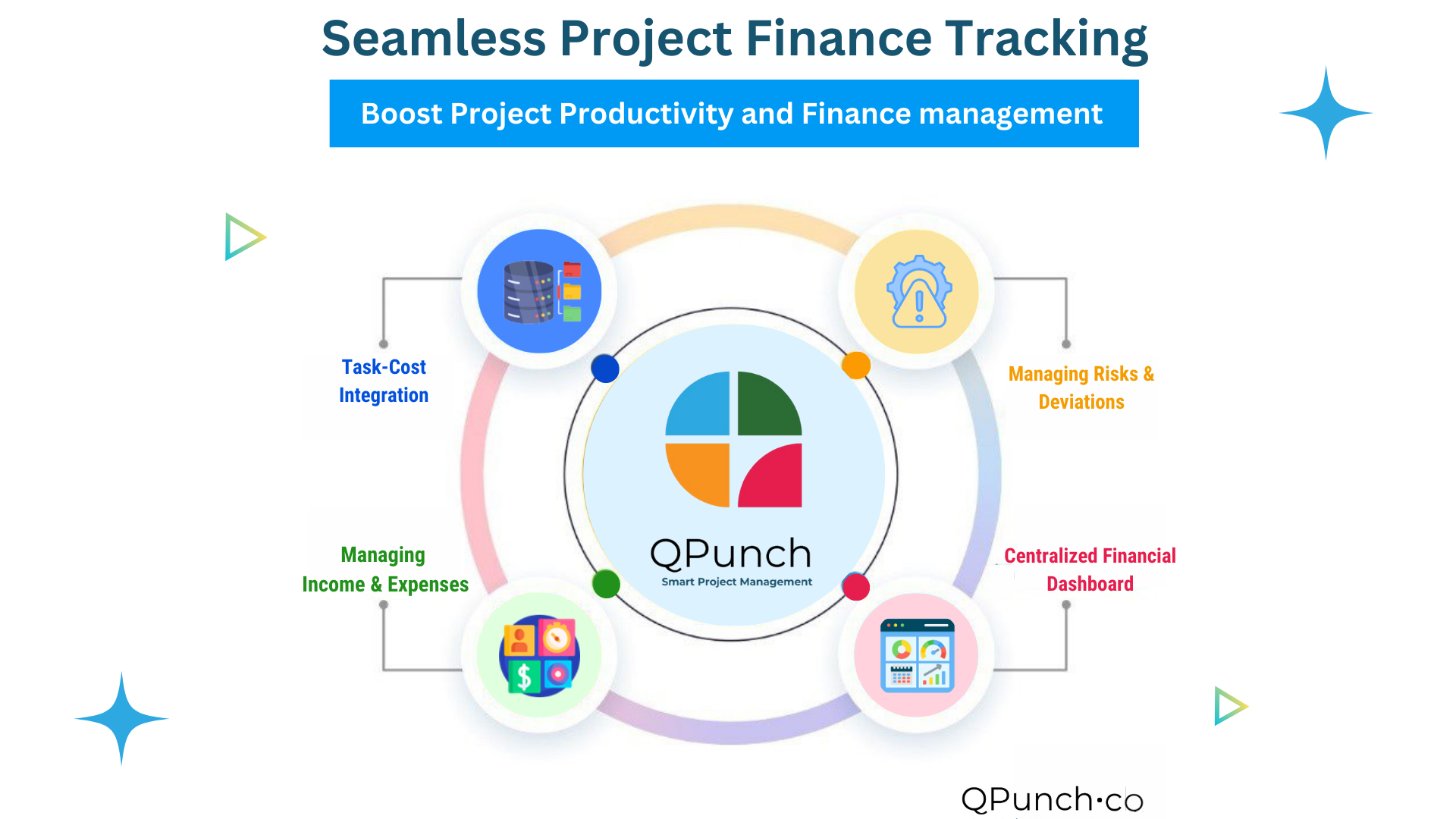
Implementation Approach:
As a solution for a Centralized Financial Dashboard and Real-Time Tracking QPunch provided Dynamic Financial Dashboard to visualize:
- Project Cost Financials:
QPunch Helped visualize overall project income, expenses, and profit and below them we have a section which shows Project Income and Expenses With their respective Planned vs actual and next to it We have Profit Margin and Overall progress with Project completion date and all this data is based on up-to-date financial entries.
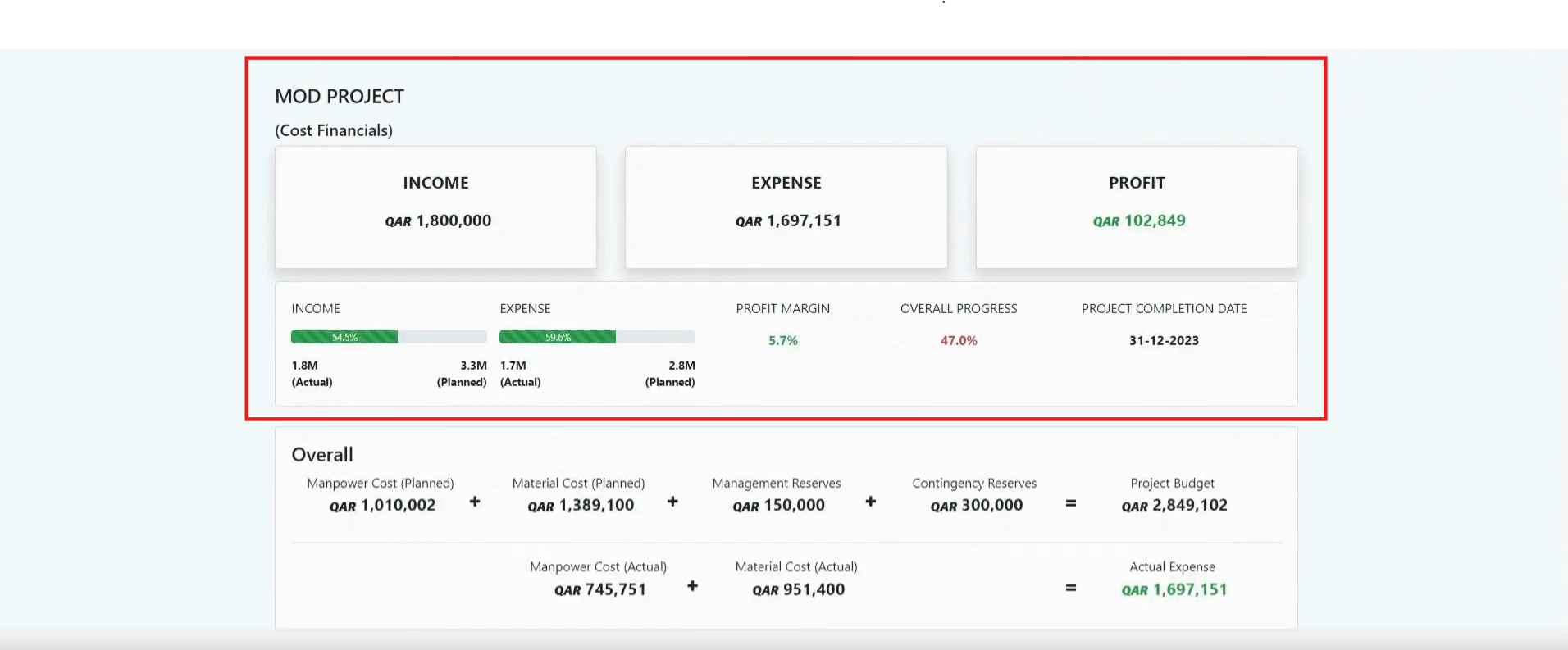
Overall Expense: Track overall expenses by first displaying the profit budget and actual expenses.
- The Overall Project Budget are determined using = Manpower Cost (Planned) + Material Cost (Planned) + Management Reserves + Contingency Reserves.
- The Overall Actual Expenses are determined using = Manpower Cost (Actual) + Material Cost (Actual).
These figures are tracked from inputs provided by different project managers and teams.
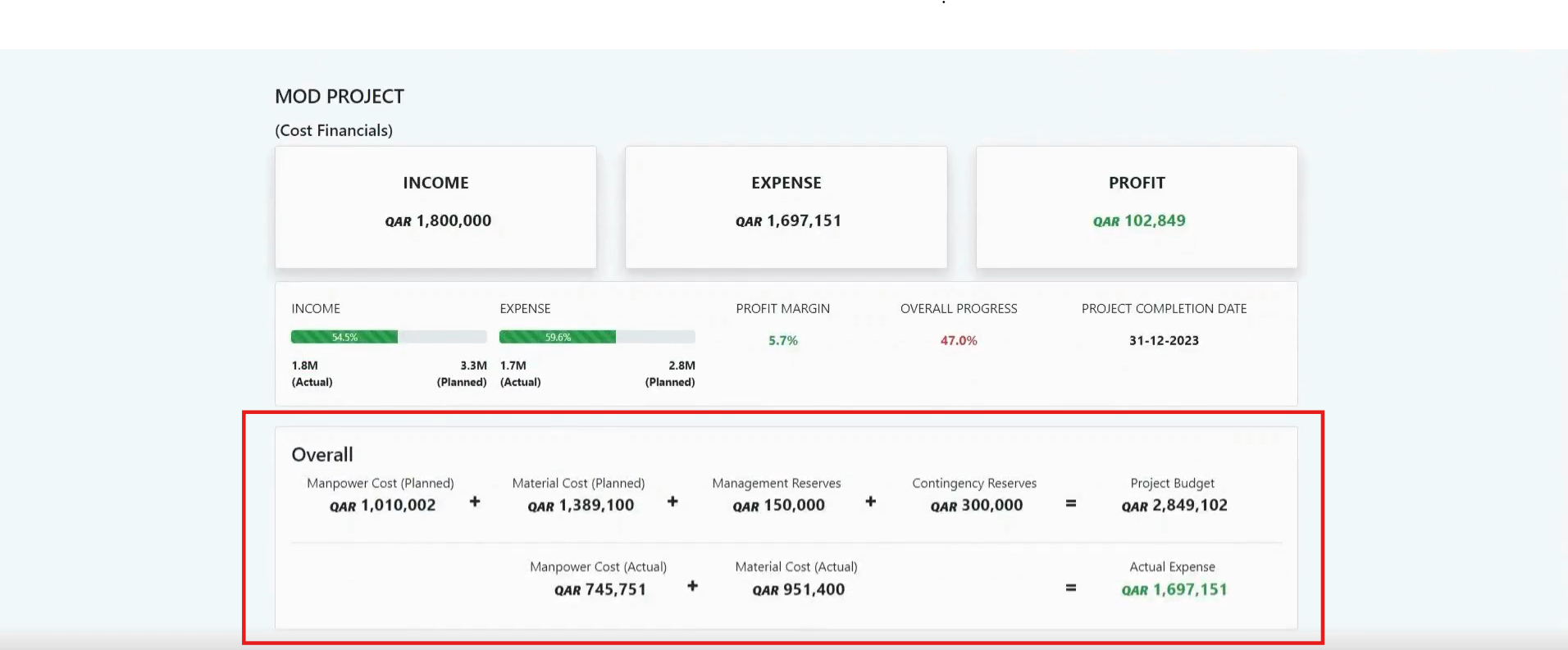
- Income and payment milestone: To track and compare payment milestone QPunch gave them Expected milestones view which visualized Milestone name, progress %, payment amount, status, due date and action icon to monitor and update real-time payment milestones.
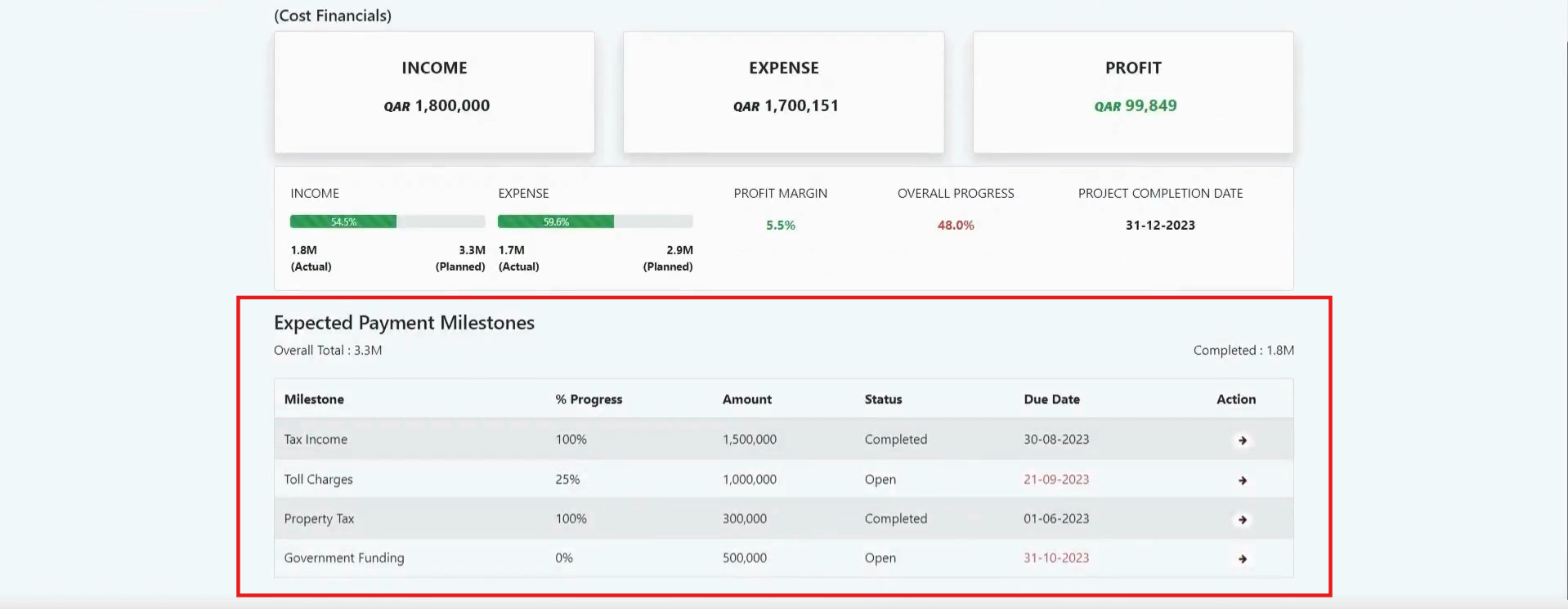
As a solution for Manual Processes and Task-Cost Integration, QPunch introduced Gantt Chart and Kanban (Planned vs. Actual) Integration:
- Each project task activity on the Gantt chart and kanban includes fields for both planned and actual costs for manpower and material cost which can be updated by the project manager and team. (they can also update the supporting images or documents for future reference)
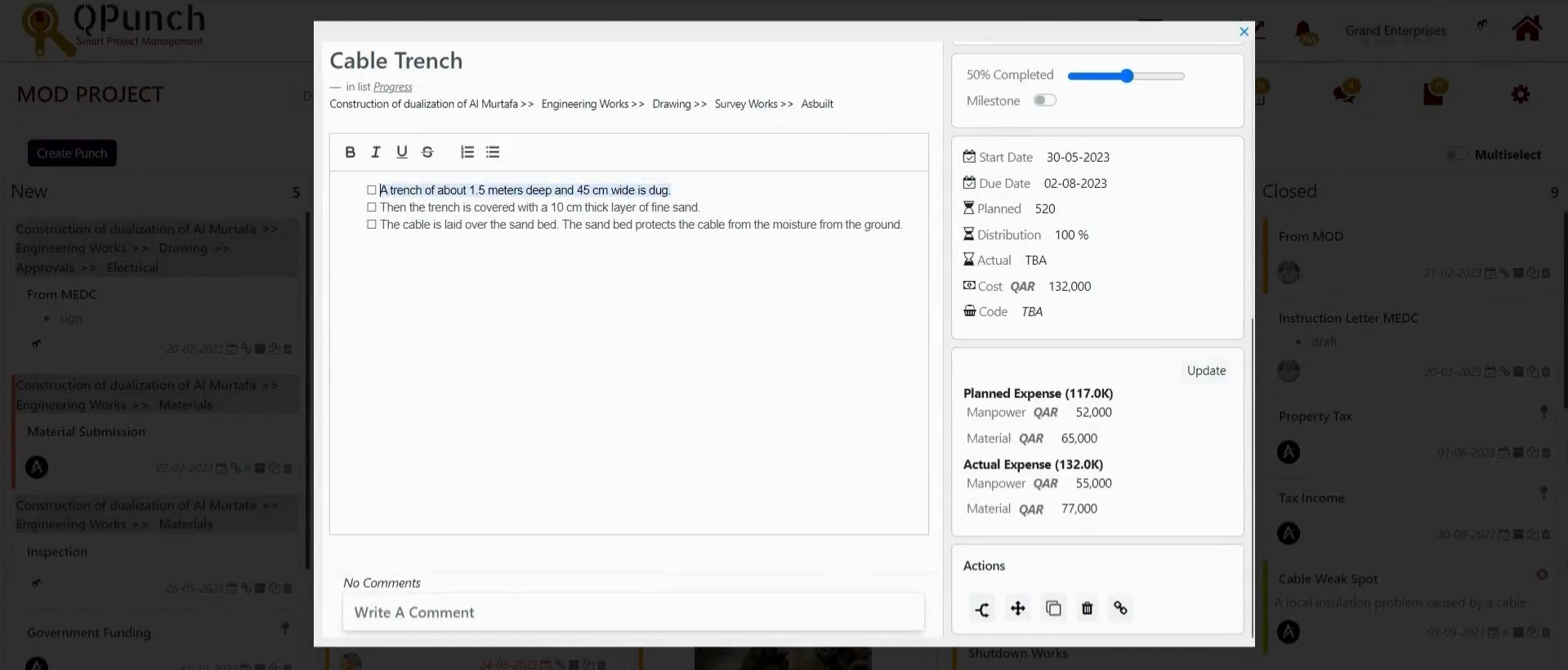
- Real-Time Updates:
Once the project managers and team update the planned cost and actual cost the changes are then instantly reflected on the dashboard.
- Real-Time Updates:
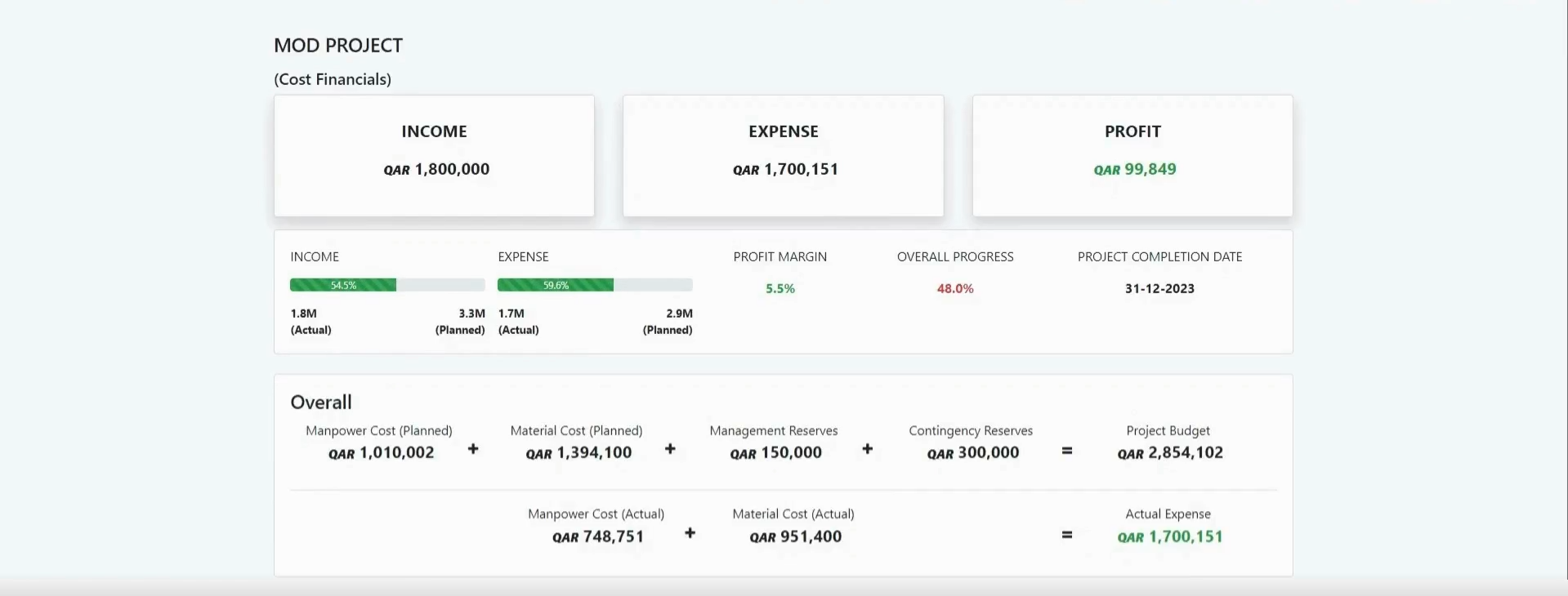
As a solution for Payment Milestone Delays, Managing Risks & Deviations, QPunch introduced Payment Milestone Tracking:
- The payment milestones could be easily tracked and updated by clicking on the action button in the payment milestone table.
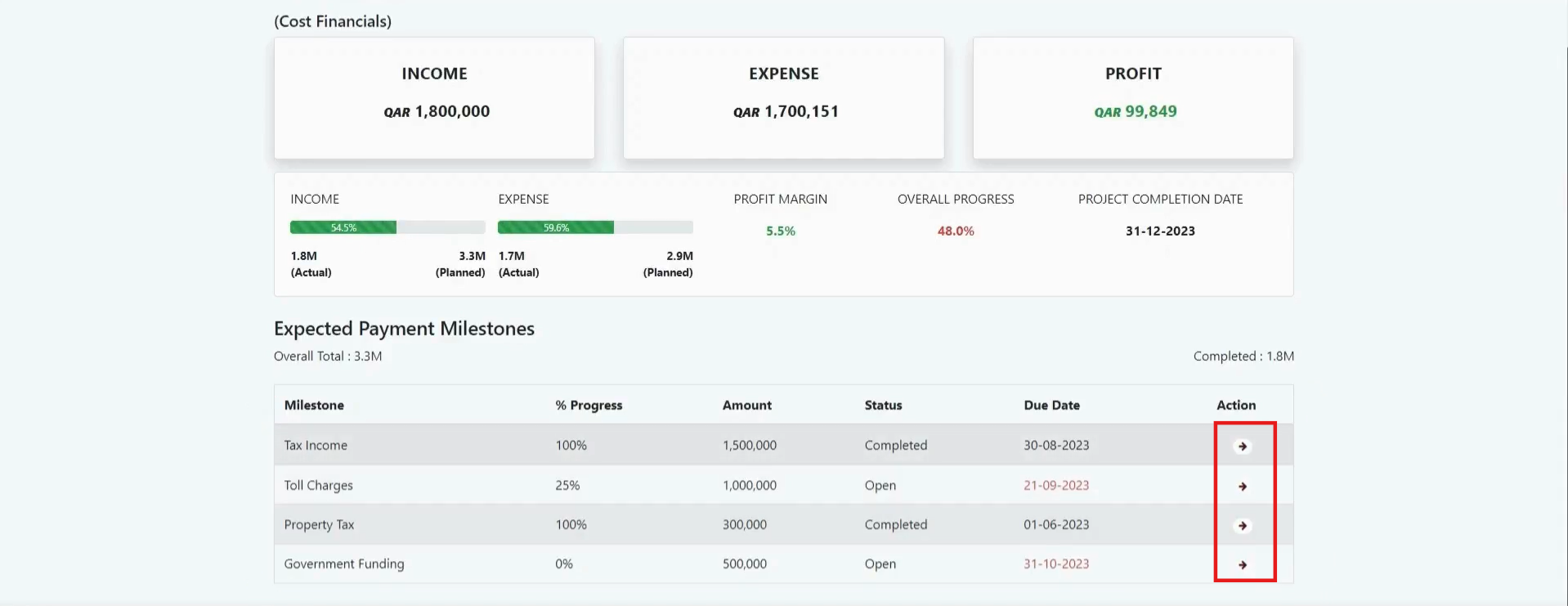
- The expected milestone table displays multiple payment milestones, enabling users to add new milestones or update existing ones and once updated, the changes will immediately reflected on the financial dashboard, ensuring that each payment milestone income is accurately recorded and compared against expenditures.
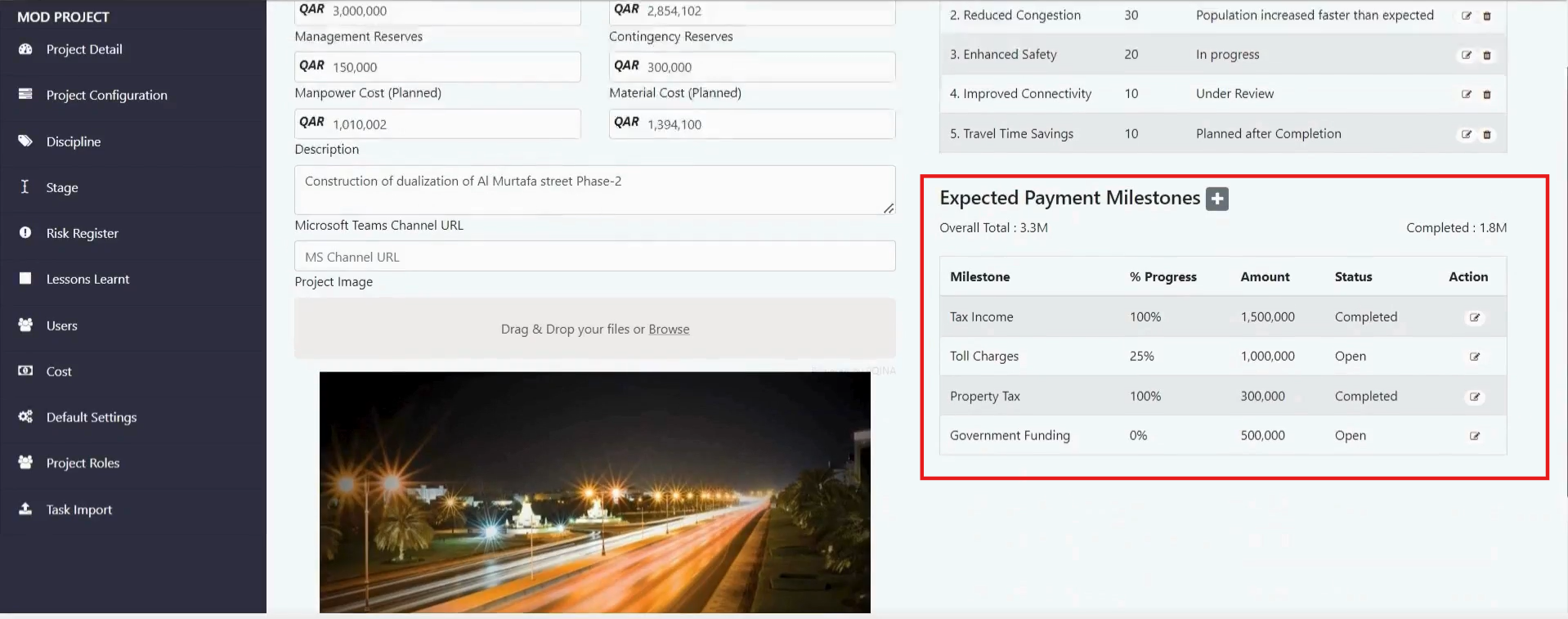
Conclusion:
By adopting QPunch’s Financial Tracking Module, the client transformed its approach to project financial management. The solution delivered real-time visibility with instant updates on budgets, actual expenses, and income milestones; enhanced profitability control through dynamic profit margin calculations that adjust automatically as project costs change; and reduced manual errors via automated synchronization between planning and execution. Additionally, transparent and accessible financial insights improved stakeholder confidence, enabling timely, informed decision-making. This robust financial tracking solution not only streamlined the company’s processes but also ensured that projects were delivered on time, within budget, and with assured profitability—even under economically tight conditions.
Address On Maps
Ready To Get Started with Smart Project Management?
